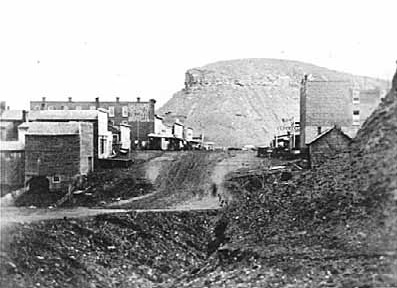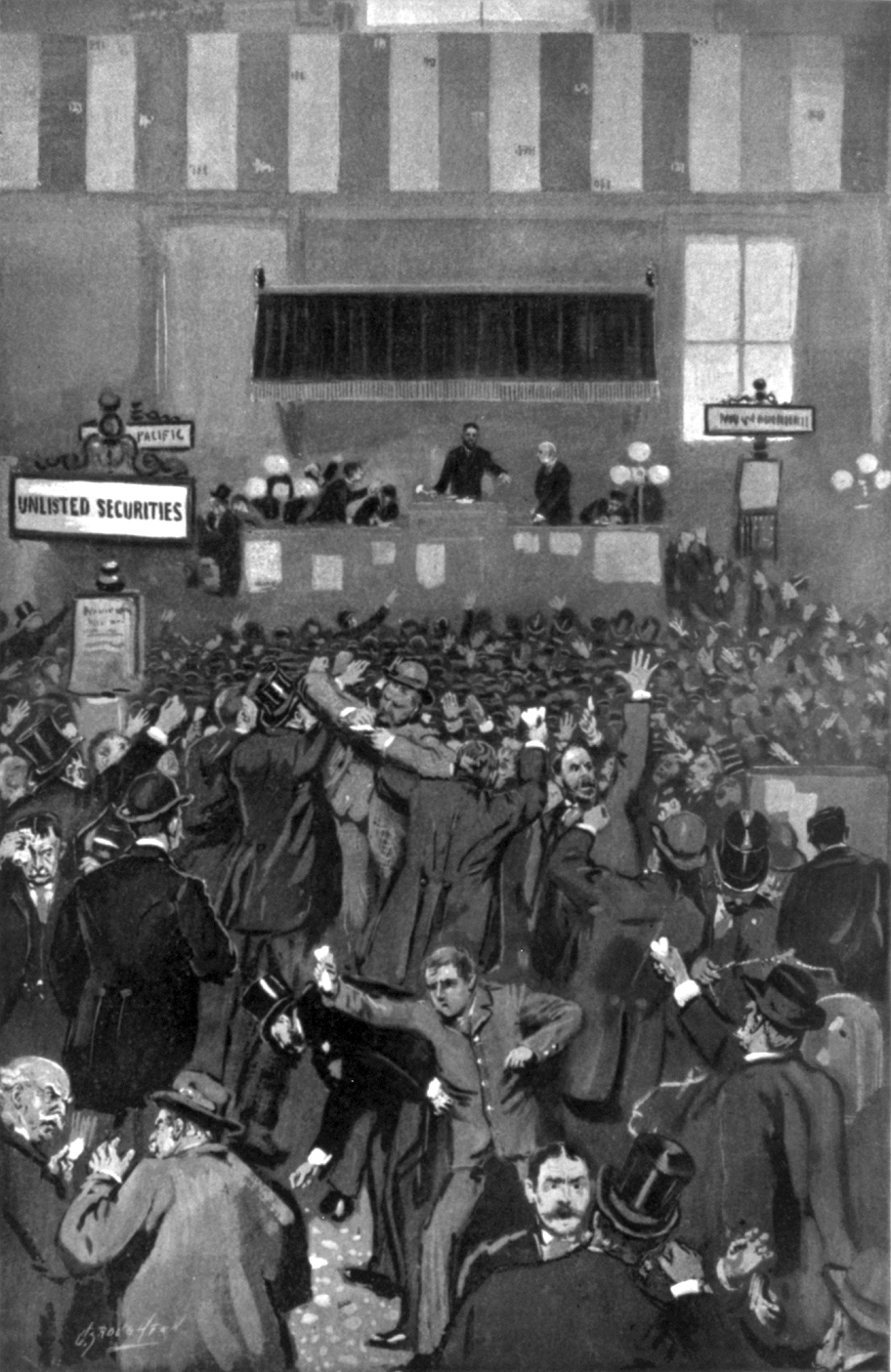|
S. B. Foot Tanning Company
S.B. Foot Tanning Company is a leather production facility located in Red Wing, Minnesota. It processes leather for use in the crafting of shoes, boots, belts, and leather accessories. In 2010, the factory processed nearly 6 million linear feet of hides. S.B. Foot Tanning Company is a wholly owned subsidiary of Red Wing Shoes Company, Inc. and is the principal supplier of leather to their shoe manufacturing plants. The company also supplies over 1.5 million linear feet of leather for use in the production of military footwear per year, extending a tradition that began with World War I, when the tannery supplied boot leathers for the construction of soldier boots. Processing Hides are sourced from Feedlot cattle raised on ranches in Nebraska and Texas which are then run through primary processing in Minnesota and Iowa. The tannery then purchases the pre-processed hides which arrive in a stage of production called " Wet Blue," a term applied to animal hides that have been cured i ... [...More Info...] [...Related Items...] OR: [Wikipedia] [Google] [Baidu] |
Leather
Leather is a strong, flexible and durable material obtained from the tanning, or chemical treatment, of animal skins and hides to prevent decay. The most common leathers come from cattle, sheep, goats, equine animals, buffalo, pigs and hogs, and aquatic animals such as seals and alligators. Leather can be used to make a variety of items, including clothing, footwear, handbags, furniture, tools and sports equipment, and lasts for decades. Leather making has been practiced for more than 7,000 years and the leading producers of leather today are China and India. Animal rights groups claim that modern commercial leather making and the consumption of its products is unethically killing animals. According to the life-cycle assessment (LCA) report for the United Nations Industrial Development Organization, 99% of the raw hides and skins used in the production of leather derive from animals raised for meat and/or dairy production. Critics of tanneries claim that they engage in ... [...More Info...] [...Related Items...] OR: [Wikipedia] [Google] [Baidu] |
Red Wing, Minnesota
Red Wing is a city in Goodhue County, Minnesota, United States, along the upper Mississippi River. The population was 16,547 at the 2020 census. It is the county seat of Goodhue County. This city is named for early 19th-century Dakota Sioux chief Red Wing. The federal government established a Mdewakanton Sioux Indian reservation—now Prairie Island Indian Community—in 1889 along the Mississippi River to free up land for new settlers. The city of Red Wing developed around it. The National Trust for Historic Preservation placed Red Wing on its 2008 distinctive destinations list because of its "impressive architecture and enviable natural environment." History In the early 1850s, settlers from Mississippi River steamboats came to Red Wing to farm in Goodhue County. They encroached on traditional territory of the Mdewakanton Sioux. The settlers cleared the land for wheat, the annual crop of which could pay the cost of the land. Before railroads were constructed ac ... [...More Info...] [...Related Items...] OR: [Wikipedia] [Google] [Baidu] |
Red Wing Shoes
Red Wing Shoes (Red Wing Shoe Company, LLC) is an American footwear company based in Red Wing, Minnesota that was founded by Charles H. Beckman in 1905. Within 10 years of its inception, Red Wing Shoes was producing more than 200,000 pairs of boots per year and was the primary company manufacturing footwear for American soldiers fighting in World War I. Red Wing Shoes continued its tradition of producing footwear for wartime use by manufacturing boots for American soldiers during World War II. Products Though Red Wing Shoes is known primarily for their leather boots intended for heavy work, in recent years the company has expanded its line-up to include athletic-styled, work shoes and footwear designed for specific job applications such as slip-resistant shoes designed for the service industry and boots for the mining industry that utilize a metatarsal guard. The company produces Oxfords, chukkas, hiking boots, and logger styles, as well as 6-inch and 8-8 1/2 inch work bo ... [...More Info...] [...Related Items...] OR: [Wikipedia] [Google] [Baidu] |
Feedlot
A feedlot or feed yard is a type of animal feeding operation (AFO) which is used in intensive animal farming, notably beef cattle, but also swine, horses, sheep, turkeys, chickens or ducks, prior to slaughter. Large beef feedlots are called concentrated animal feeding operations (CAFO) in the United States and intensive livestock operations (ILOs) or confined feeding operations (CFO) in Canada. They may contain thousands of animals in an array of pens. Purpose and regulation The basic principle of the feedlot is to increase the amount of fat gained by each animal as quickly as possible; if animals are kept in confined quarters rather than being allowed to range freely over grassland, they will gain weight more quickly and efficiently with the added benefit of economies of scale. Most feedlots require some type of governmental approval to operate, which generally consists of an agricultural site permit. Feedlots also would have an environmental plan in place to deal with t ... [...More Info...] [...Related Items...] OR: [Wikipedia] [Google] [Baidu] |
Tannery (facility)
{{disambiguation ...
Tanning may refer to: *Tanning (leather), treating animal skins to produce leather *Sun tanning, using the sun to darken pale skin ** Indoor tanning, the use of artificial light in place of the sun **Sunless tanning, application of a stain or dye to the skin (active ingredient in tanning lotion products is dihydroxyacetone (DHA)). * Physical punishment, metaphorically, such as a severe spanking which leaves clear marks See also * Skin whitening *Tan (color) * Tan (other) *Tannin (other) Tannin usually refers to astringent, bitter chemical compounds naturally occurring in plants, which are used in tanning hides and prominent in the taste of some red wines. It may also refer to: * Tannin, a monster in Levantine mythology See als ... [...More Info...] [...Related Items...] OR: [Wikipedia] [Google] [Baidu] |
Precipitation (chemistry)
In an aqueous solution, precipitation is the process of transforming a dissolved substance into an insoluble solid from a super-saturated solution. The solid formed is called the precipitate. In case of an inorganic chemical reaction leading to precipitation, the chemical reagent causing the solid to form is called the ''precipitant''. The clear liquid remaining above the precipitated or the centrifuged solid phase is also called the 'supernate' or 'supernatant'. The notion of precipitation can also be extended to other domains of chemistry (organic chemistry and biochemistry) and even be applied to the solid phases (''e.g.'', metallurgy and alloys) when solid impurities segregate from a solid phase. Supersaturation The precipitation of a compound may occur when its concentration exceeds its solubility. This can be due to temperature changes, solvent evaporation, or by mixing solvents. Precipitation occurs more rapidly from a strongly supersaturated solution. The formatio ... [...More Info...] [...Related Items...] OR: [Wikipedia] [Google] [Baidu] |
Silas Buck Foot
Silas or Silvanus (; Greek: Σίλας/Σιλουανός; fl. 1st century AD) was a leading member of the Early Christian community, who according to the New Testament accompanied Paul the Apostle on his second missionary journey. Name and etymologies ''Silas'' is traditionally assumed to be the same as the ''Silvanus'' mentioned in four epistles. Some translations, including the New International Version, call him "Silas" in the epistles. Paul, Silas, and Timothy are listed as co-authors of the two New Testament letters to the Thessalonians, though the authorship is disputed. The ''Second Epistle to the Corinthians'' mentions Silas as having preached with Paul and Timothy to the church in Corinth (), and the First Epistle of Peter describes Silas as a "faithful brother" (). There is some disagreement over the original or "proper" form of his name: "Silas", "Silvanus", "Seila", and "Saul" seem to be treated at the time as equivalent versions of the same name in different lan ... [...More Info...] [...Related Items...] OR: [Wikipedia] [Google] [Baidu] |
Featherstone Township, Goodhue County, Minnesota
Featherstone Township is a township in Goodhue County, Minnesota, United States. The population was 785 at the 2000 census. History Featherstone Township was organized in 1858, and named for William Featherstone, an early settler. Notable person Lyle Mehrkens (1937-2018), Minnesota state legislator and farmer, was born in Featherstone Township. Geography According to the United States Census Bureau, the township has a total area of , all land. Demographics As of the census of 2000, there were 785 people, 274 households, and 241 families residing in the township. The population density was 21.9 people per square mile (8.4/km2). There were 282 housing units at an average density of 7.9/sq mi (3.0/km2). The racial makeup of the township was 98.73% White, 0.25% Native American, 0.25% Asian, 0.38% from other races, and 0.38% from two or more races. Hispanic or Latino of any race were 0.76% of the population. There were 274 households, out of which 36.5% had children under ... [...More Info...] [...Related Items...] OR: [Wikipedia] [Google] [Baidu] |
Panic Of 1893
The Panic of 1893 was an economic depression in the United States that began in 1893 and ended in 1897. It deeply affected every sector of the economy, and produced political upheaval that led to the political realignment of 1896 and the presidency of William McKinley. Causes The Panic of 1893 has been traced to many causes, one of those points to Argentina; investment was encouraged by the Argentine agent bank, Baring Brothers. However, the 1890 wheat crop failure and a failed coup in Buenos Aires ended further investments. In addition, speculations in South African and Australian properties also collapsed. Because European investors were concerned that these problems might spread, they started a run on gold in the U.S. Treasury. Specie was considered more valuable than paper money; when people were uncertain about the future, they hoarded specie and rejected paper notes.Nelson, Scott Reynolds. 2012. A Nation of Deadbeats. New York: Alfred Knopf, p. 189. During th ... [...More Info...] [...Related Items...] OR: [Wikipedia] [Google] [Baidu] |
Great Depression In The United States
In the United States, the Great Depression began with the Wall Street Crash of October 1929 and then spread worldwide. The nadir came in 1931–1933, and recovery came in 1940. The stock market crash marked the beginning of a decade of high unemployment, poverty, low profits, deflation, plunging farm incomes, and lost opportunities for economic growth as well as for personal advancement. Altogether, there was a general loss of confidence in the economic future. The usual explanations include numerous factors, especially high consumer debt, ill-regulated markets that permitted overoptimistic loans by banks and investors, and the lack of high-growth new industries. These all interacted to create a downward economic spiral of reduced spending, falling confidence and lowered production. Industries that suffered the most included construction, shipping, mining, logging, and agriculture. Also hard hit was the manufacturing of durable goods like automobiles and appliances, whose p ... [...More Info...] [...Related Items...] OR: [Wikipedia] [Google] [Baidu] |
Mississippi River
The Mississippi River is the second-longest river and chief river of the second-largest drainage system in North America, second only to the Hudson Bay drainage system. From its traditional source of Lake Itasca in northern Minnesota, it flows generally south for to the Mississippi River Delta in the Gulf of Mexico. With its many tributaries, the Mississippi's watershed drains all or parts of 32 U.S. states and two Canadian provinces between the Rocky and Appalachian mountains. The main stem is entirely within the United States; the total drainage basin is , of which only about one percent is in Canada. The Mississippi ranks as the thirteenth-largest river by discharge in the world. The river either borders or passes through the states of Minnesota, Wisconsin, Iowa, Illinois, Missouri, Kentucky, Tennessee, Arkansas, Mississippi, and Louisiana. Native Americans have lived along the Mississippi River and its tributaries for thousands of years. Most were ... [...More Info...] [...Related Items...] OR: [Wikipedia] [Google] [Baidu] |
Minneapolis
Minneapolis () is the largest city in Minnesota, United States, and the county seat of Hennepin County. The city is abundant in water, with list of lakes in Minneapolis, thirteen lakes, wetlands, the Mississippi River, creeks and waterfalls. Minneapolis has its origins in timber and as the grist mill, flour milling capital of the world. It occupies both banks of the Upper Mississippi River, Mississippi River and adjoins Saint Paul, Minnesota, Saint Paul, the state capital of Minnesota. Prior to European settlement, the site of Minneapolis was inhabited by Dakota people. The settlement was founded along Saint Anthony Falls on a section of land north of Fort Snelling, Minnesota, Fort Snelling; its growth is attributed to its proximity to the fort and the falls providing power for industrial activity. , the city has an estimated 425,336 inhabitants. It is the most populous city in the state and the 46th-most-populous city in the United States. Minneapolis, Saint Paul and the su ... [...More Info...] [...Related Items...] OR: [Wikipedia] [Google] [Baidu] |





